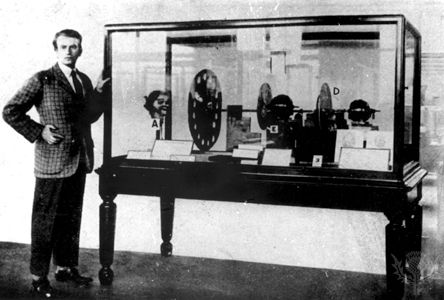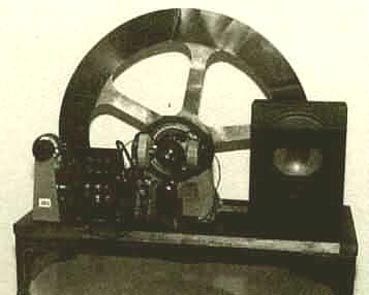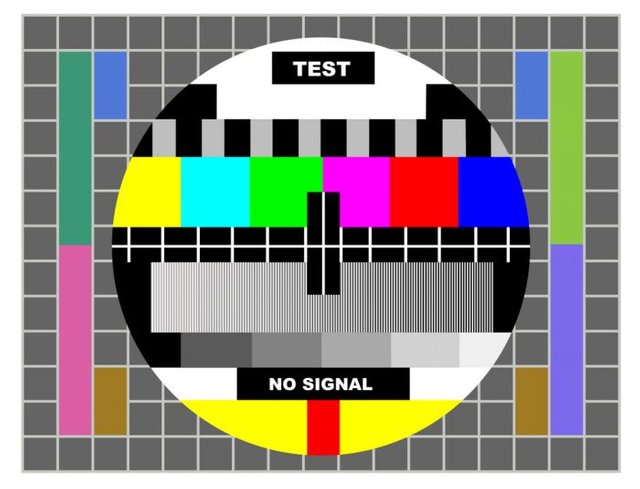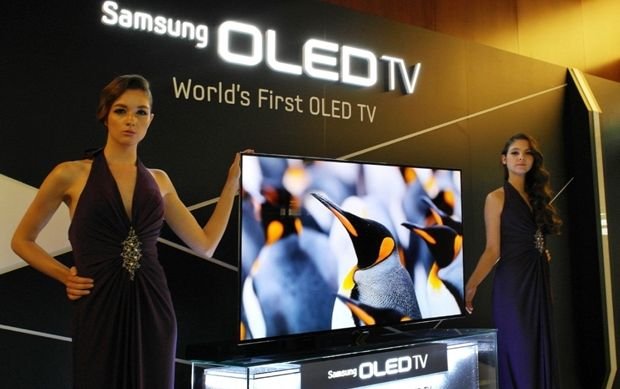When a cat appeared, it cost the first TV in the world
The modern version of the "crystal globe" in which the world can be seen, the TV fascinates mankind for almost a hundred years. Read about TV history: from cathodic to digital.
In its 100-year history, TV has shattered governments, boosted revolutions, but it has also created a guilty pleasure to learn, for example, what's happening in celebrity lives. Whether we look at a news release, an animal documentary, or a Big Brother show, there are times when we can not untie the little screen. Few can imagine their lives without the ever thinner and more beautiful box in which we can say that the whole world is falling.
Today, TVs connect to the Internet and have a voice command. Their beginnings were, however, modest, but not romantic. The TV is now in the category of little ideas that revolutionized the world. And to such ideas, champions are children and young people. Through the Tech School project, their big plans can become reality.
How it all started
At the beginning of the twentieth century, fashion was the newspaper. Then, slowly, the radio made its way into the scene. The first demonstration of a television broadcast was made only in 1926 and bears the signature of John Logie Baird (photo).
But the Scot engineer was "on the shoulders of the giants": he would not have succeeded without Willoughbi Smith, who in 1873 discovered photoconduction of selenium, and without Paul Gottlieb Nipkow, who in 1884 capitalized on the rotating disc principle - the first electromecanic television.
In 1927, Baird transmits a signal at a distance of 705 km between London and Glasgow, and in 1928, Baird's company manages to make its first translatlantic TV transmission from London to New York.
Full of enthusiasm, the Scotsman helped develop technology in Germany in 1929. In the same year, he puts together with Bernard Natan and the foundations of France's first television company. In the same year, the first TV was also sold. Costa, in today's money, is about 12 thousand dollars.
Britain remains, however, in history. On November 2, 1936, the BBC began broadcasting the world's first public television service in London's Alexandra Palace.
The small screen arrives in everybody's homes
Like any invention, the television was originally intended for those with money. Later, however, it also reached the homes of middle-income people. At the beginning, the TV was not just a television, but a modified radio.
In the United Kingdom, the United States of America and the Soviet Union, televisions were sold commercially during 1928-1934. The first sold were those of Baird in the UK in 1928. Basically, there were some radios with a TV set consisting of a neon tube behind a mechanical rotary disc (Nipkow disc), with a spiral with apertures that produced an image of the size of a stamp, doubled by a magnifying glass.
The "Televisor" TV, sold between 1930-1933, is considered the first mass production. Thousands of units reached the public at that time.
The transition to the cathode ray tube was made in 1934 by Telefunken in Germany. In the next 4 years, technology was already developed in France (1936), Great Britain (1936) and America (1938).
Before World War II, 19,000 electronic TVs were manufactured in the UK and 1,600 in Germany. In the United States, the use of the TV exploded after World War II. Due to technological advance after the war and the expansion of Western television networks, the price of the appliances has fallen.
In 1947, Motorola introduced the VT-71, the first TV under $ 200, to the market. Millions of Americans allowed the "magic box" they dreamed of. Until 1962, 90% of the American population had a TV in the house.
Always when there is something unobserved on the market, the skeptics also appear, and the TV has a dime. Even the 20th Century Fox CEO, Darryl Zanuck, did not believe in the new technology: "Television will not be able to keep any market it captures after the first six months. People will get bored to look at the plywood box in every evening, "he said in 1946. History would contradict him.
How many hogs, so much habit
For decades, different countries have also used different technical standards. France initially adopted the German standard with 441 lines, increasing to 819 lines later, the highest definition of an analog TV system, almost double the resolution used by the British, with 405 lines.
In the 1960s, most TVs only used vacuum tubes, making televisions relatively heavy and unstable.
In the early 1970s, electronics with solid parts (transistors, diodes, chips) appeared. This allowed a better image quality.
We see the world in color, on a remote TV
"Color television! Pff, I do not think so until I see it in black and white," said American producer Samuel Goldwyn, who founded several production studios in Hollywood.
And in 1971, in the US, the number of color TVs sold surpassed that of black and white TVs. In other countries, the passage occurred more slowly. In Western Europe, the pace was not until the 1980s.
The first color television was manufactured by Toshiba in 1959, and since 1960 it was available for purchase.
Zenith Radio Corporation created the first TV remote in 1950 called "Lazy Bone". It had start and stop functions of the TV and channel switching. The remote was connected to the TV via a massive cable. All of Zenith created the first "Flash-matrix" wireless remote control in 1955. Infrared remotes have replaced the classic ones in the 1980s.
The new technologies
After the appearance of color TVs with remote control, you might think that the history of this field is already annoying. But it's not like that. Nowadays, the big manufacturers see the TV as the central piece of a home. It's not just a TV-receiving device but a whole machine that lets us watch videos on YouTube, browse the Internet and watch the holiday pictures.
Steps in this direction have been made since the 1990s, when S-Video or Video standards came up, and televisions began to come up with additional inputs that are indispensable today for game consoles and players.
It was also at that time that the transition to HDTV was made even though LCD technology had appeared since 1988. Then there were small handhelds with black and white screen that could not display the resolution of 480 lines.
The total abandonment of analogue TV transmission technology has been made since 2006 in a growing number of countries.
A century of television development brings us new terms today: plasma, LCD, LED, OLED, 3D.
There is a permanent competition between LCD and plasma TVs, each of which brings other benefits. While plasma has a high viewing angle, shorter response time, better contrast ratio and higher color fidelity, LCDs offer better brightness, low energy consumption (a double consumption of plasma ) and are much more affordable as a price.
LED TVs are ultra thin, have low current consumption, long life, responsiveness, more vivid and natural colors, and low environmental pollution. But the viewing angle is lower than the plasma angle.
OLED TVs give up liquid crystal lighting on LED TVs using light-emitting organic diodes. It stops working on the backlight of the screen, but on the light when it comes in contact with an electric current. The technology being recent, they have the highest price.
With the addition of 3D movies in cinemas, consumer technology has also emerged in the comfort of their own home, and 3D TVs have become increasingly popular.
What will happen in the future
Perhaps over 5 or 10 years, those who will not have a 3D TV in the house will not be considered around the world. This technology evolves quickly, precisely because it is spectacular. Although the concept is SF, the idea of three-dimensional images emerged from the 1830s.
At this time, he is working to develop autostereoscopy, which involves viewing 3D content without special glasses. There are ways to turn your TV into a true media server by playing various files directly from memory devices.
The number of connections and different inputs and outputs of a television, as well as the ability to connect to the Internet through network cable or Wi-Fi, raise the demands of the consumer today, while pushing TV developers to new advances.
source: yoda.ro/techschool/istoria-devices-of-catodic-to-digital.
https://ro.wikipedia.org
http://metropotam.ro
https://pixabay.com








Technology is very fast
When I see old TV, people are amazed. Much has changed in a short time
Good knowledgeable sharing
it's too fast
great technology